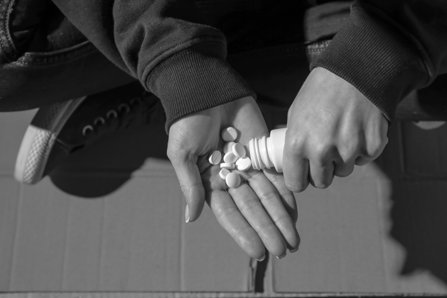Bad Habits Lead to Bad Habits—The Importance of Maintaining a Sober and Healthy Life

A headline in U.S. News caught my eye. It read, “Teens’ Opioid Abuse May Be Gateway to Heroin.” Written by U.S. News contributor Robert Preidt, the article talks about how one type of drug use can lead to another type of drug use. And the second drug used is often more dangerous and risky than the first drug.
That bodes poorly for Americans. Why? Because our country is chock-full of opioid pain relievers, and opioid pain relievers are very similar to the illegal street drug heroin. Is it too much of a leap to suggest that if millions of Americans are misusing opioid painkillers, (which they are, according to the National Institute on Drug Abuse), that those millions of Americans are also at risk for IV heroin use, a habit arguably even more dangerous than consuming prescription opioids?
Drug Use Leads to… More Drug Use
The U.S. News article discusses teen drug use and how teens who use opioid pain relievers are more likely to use heroin. The article quotes Adam Leventhal, the director of the Institute for Addiction Science at the University of Southern California Keck School of Medicine.
According to Leventhal, “Prescription opioids and heroin activate the brain’s pleasure circuit in a similar way. Teens who enjoy the ’high’ from prescription opioids could be more inclined to seek out other drugs that produce euphoria, including heroin. While we can’t definitively conclude that there is a cause-and-effect relation, there may be something unique about opioid drugs that makes youths vulnerable to trying heroin.”

The Dwindling Spiral of Drug Use
Have you ever heard drug addiction referred to as a “dwindling spiral”? There’s a reason for that. It’s not just a catchy term that paints a painfully honest picture of what drug addiction does to a person. Drug addiction is a dwindling spiral all right, but there’s a particular aspect of drug addiction that makes the habit a dwindling spiral.
In the study cited above, what was occurring was that teens were being put on painkillers for sports injuries, accidents, for post-surgery pain relief, etc. This is how teens were getting a taste for drugs, initially.
The dwindling spiral aspect kicks in when painkillers are no longer potent enough for the teen. The teen’s body starts to build up a tolerance for the painkillers, and soon the teen is seeking out a different type of opioid, a more potent opioid like heroin.
This is why we may want to reconsider the current tendency of prescribing opioid pain relievers to young people. While we should not simply leave young people to struggle in pain, we may want to find other methods of pain relief that do not involve putting teens on opioid drugs that could lead to more drug use later down the road.
The Value in a Completely Drug-Free Life

The most important thing that young people can learn regarding drug use is this:
No degree or level of drug use is “okay.”Sobriety and total abstinence from drug use have to be the goal, the mission, and has to be the commitment that our younger generation makes. As parents, it’s on us to make sure we raise our kids with the values, morals, principles, and commitments of totally drug-free living. As parents, we have to do everything we can to ensure our kids don’t use drugs at all, not just that they don’t use “most” drugs.
The best way parents can do this is by making sure their kids are educated about drugs. Parents need to teach their kids the truth about each drug their kids might be exposed to. It means talking to kids about why they wouldn’t want them to use painkillers, (even if there is pain present), why heavy alcohol consumption is harmful, etc. It means having real conversations, answering questions, giving examples, explaining things, giving advice, etc. That is how parents create the best opportunity for raising kids who don’t use drugs.
Helping a Loved One Get Clean
If you have a family member or loved one who’s fallen prey to drug use or heavy drinking, don’t feel as though it is too late for them. Yes, this article is about prevention efforts and doing everything we can to get young people educated and understanding why they shouldn’t use drugs.
But that’s not going to work 100 percent of the time. If you have a family member or loved one who has already fallen prey to drug addiction or heavy drinking, the best thing you can do for them is to help them get into a residential drug and alcohol addiction treatment center. It’s best to do so as soon as possible. The longer you wait, the more the dwindling spiral takes over, and the more at-risk your loved one becomes.
Narconon halts the dwindling spiral of addiction by applying a unique approach to residential drug rehab. Commit to helping your loved one get better by insisting they seek help through residential treatment.
Sources:
- https://www.drugabuse.gov/publications/research-reports/misuse-prescription-drugs/what-scope-prescription-drug-misuse
- https://www.usnews.com/news/health-news/articles/2019-07-12/teens-opioid-abuse-may-be-gateway-to-heroin


 ®
®